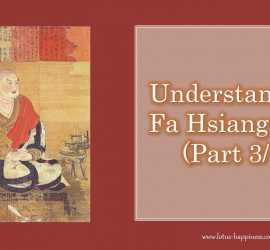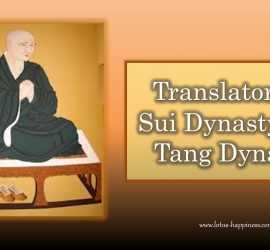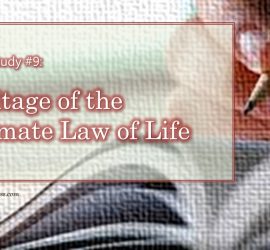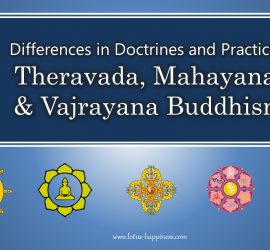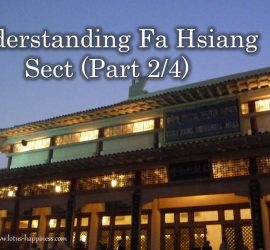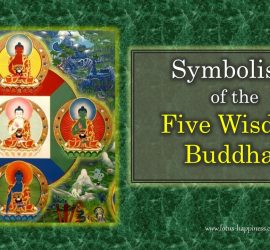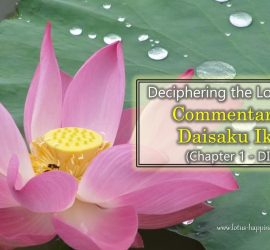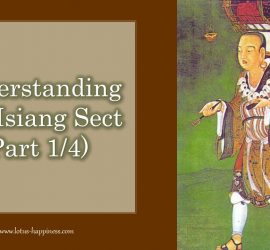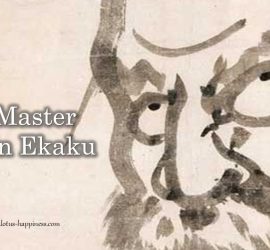Understanding Fa Hsiang Sect (Part 3/4) Four Functional Portions With respect to the relationship between the subjective consciousness and the object phenomena, there are four mental functional portions in each of the eight consciousnesses. They are interdependent in nature. The objective or the seen portion [相分], ie. Laksana-bhaga — all phenomena […]
M L
Translators in Sui Dynasty and Tang Dynasty Here are the famous translators during Sui Dynasty [隋朝] (581-618 A.D.) and Tang Dynasty [唐朝] (618-907 A.D.) Jnanayasas [闍那耶舍/尊稱] from Magadha in North India to China at the end of the Period of Disunity, but recognised by the new Emperor Sui Wen-ti [隋文帝] Teacher of Yasogupta and Jnanagupta translated […]
Gosho Study #9: Heritage of the Ultimate Law of Life It must be ties of karma from the distant past that have destined you to become my disciple at a time like this. Shakyamuni and Many Treasures certainly realized this truth. The sutra’s statement, “Those persons who had heard the […]
Differences in Doctrines and Practices: Theravada, Mahayana, and Vajrayana Buddhism Buddhism is a world religion or philosophy with immense internal diversity when it comes to doctrines, practices, and sectarians. With over more than 2500 years of development and transmission of Buddhism from India to East Asia and Southeast Asia, Buddhism […]
Understanding Fa Hsiang Sect (Part 2/4) The Doctrine of Mere Consciousness The doctrine of mere consciousness is radical to the development of Mahayana, as it forms a comprehensive theoretical ground on Buddhism The doctrine of Fa-hsiang sect concerns mainly with the specific characteristics of all elements, both subjective and objective, […]
Symbolism of the Five Wisdom Buddhas In Vajrayana Buddhism, the Five Tathāgatas (pañcatathāgata), also known as Five Wisdom Tathāgatas (五智如来), Five Dhyani/Meditation Buddhas, or the Five Jinas (meaning in Sanskrit: “conqueror” or “victor”), are emanations and embodiments of the five qualities of the Dharmakaya Buddha of the Ultimate Truth. The […]
Deciphering the Lotus Sutra: Commentary by Daisaku Ikeda (Chapter 1 – DI 1.1) “This is What I Heard”: The Pulse of the Oneness of Mentor and Disciple #1 “The entire cosmos is the stage of the Lotus Sutra. All Buddhas have attained their enlightenment based on the Mystic […]
Mangala Sutta: 38 Blessings (Part 1/3) In the Mangala Sutta, the Buddha said that there are 38 highest blessings in life. The reason why there are so many different ‘highest blessings’ is because what may be the ‘highest blessing’ for one, may not be so for another. A person […]
Understanding Fa Hsiang Sect (Part 1/4) Name Literally, Fa-hsiang [法相], which is Dharma-laksana in Sanskrit, means ‘the characteristics of Dharmas’ or ‘the specific marks of Dharmas’. As Dharma is generally the existence of both substantial matter and mental activities, this sect focuses on the study of nature and qualities of all […]
Zen Master Hakuin Ekaku Art historians have taken an interest in Hakuin Ekaku (1686-1769) in recent years. The old Zen master’s ink brush paintings and calligraphy are prized today for their freshness and vibrancy. But even without the paintings, Hakuin’s impact on Japanese Zen is incalculable. He reformed the Rinzai Zen school. […]

